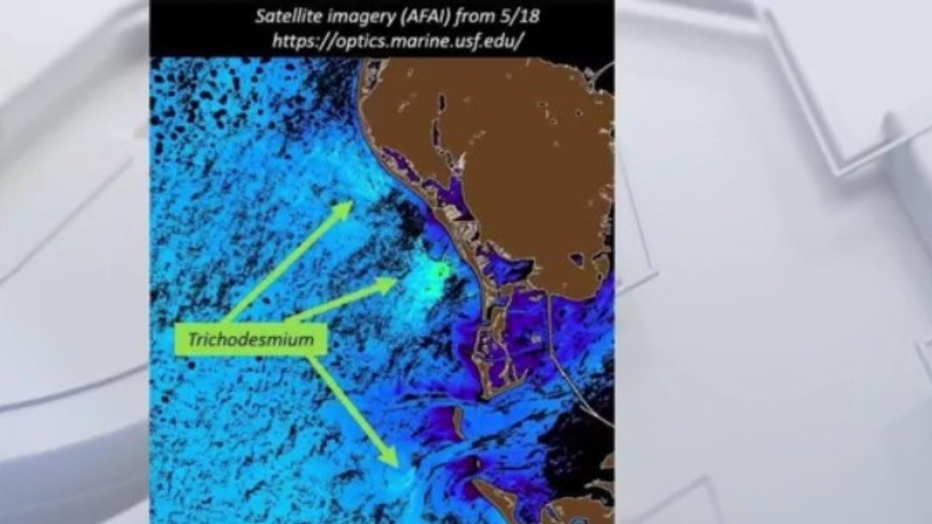Algae bloom along the Pinellas coastline under close watch

Sea sawdust on the rise on some Pinellas beaches
Along the Pinellas coastline some beaches are seeing an increase in brown algae called " sea sawdust".
TREASURE ISLAND, Fla. - The water at the shoreline may look brown along some parts of the Pinellas County coastline because of an algae bloom called trichodesmium, commonly referred to as "sea sawdust."
It’s not much of a nuisance now, but experts say it’s a precursor to toxic algae blooms like red tide.
"What it does is it fixes nitrogen in the environment. That’s important because it basically creates a food source for harmful algal blooms like red tide. Nitrogen is food for red tide. This trichodesmium creates that food for red tide to eat and help blooms really grow in profusion," said J.P. Brooker from Ocean Conservancy.
Beachgoers may not even notice the sea sawdust.
READ: Mote Marine receives NOAA grant to help restore 200,000 corals in Florida Keys
Satellite imagery captured and studied by the Florida Fish and Wildlife Conservation Commission and the University of South Florida shows "sea sawdust" blooms off the Pinellas County coast near Redington Beach, Treasure Island, and close to Anna Maria Island.

Satellite image showing the spread of "sea sawdust" algae
These blooms typically pop up between May and September, according to the FWC.
The reason it's here is because of a phenomenon that starts about 5,000 miles away; Saharan Dust.
"A lot of times, this sounds very magical, it flies over in the atmosphere from the Saharan Desert on the African continent, and it just travels in the atmosphere until it ultimately lands in the Gulf of Mexico, then the trichodesmium eats that African dust and creates the nitrogen that fuels the harmful algae," Brooker said.
READ: Giant blob of seaweed twice the width of US taking aim at Florida, scientists say
He says the current silver lining is that we don’t have a big red tide bloom impacting the Pinellas County coast.
However, low levels of the toxic algae have been detected off the coast of southern Sarasota County.
"I think the silver lining is, also, we don’t have red tide in Tampa Bay right now," said Brooker. "Red tide in Tampa Bay is where the big fish kills come from, and that’s really what we don’t want."
Conservationists and the FWC say they’re monitoring these blooms very closely.

